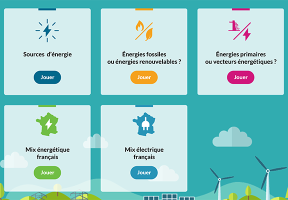Biofuels: Refining Biomass in 15 Images
5 min read
, like , can be refined to obtain a wide range of products. While the best known example is , other examples include lubricants, plastics, fertilizers, cosmetics, and drugs. Here we take a closer look at "green chemistry" in action.

1. Biomass Refining
Many plants (sugar and oil plants, wood, algae, etc.) or micro-organisms such as yeast are sources of fuels or interesting products for chemistry. But to bottle these precious molecules, complex transformation technologies are required.

2. Industrial-scale biomass processing
Sugar plants, grains and oilseeds like rapeseed, sunflower seeds and oil palm are already widely used at industrial scale to produce "first-generation" biofuels. Shown here is the Pomacle-Bazancourt plant in eastern France, which produces ethanol from sugar beets and wheat.

3. Lignocellulose, or plant dry matter
Using wood, agricultural waste and non-edible plants as biomass offers the advantage of not competing with global food supplies. This image shows jatropha crops in Mali. Jatropha is a "second-generation" biofuel, still in its early stages of development.

4. Microalgae, a rising star
While several more years of research are needed, microalgae offers excellent prospects for biomass. Some microalgae produce oil as part of the process and have the added advantage of growing on non-arable land. They are also the source of many molecules that can be used in the pharmaceutical, cosmetics, food and animal feed industries, as well as in biofuels. Shown here is a pond culture system in Vigeant in western France.

5. A closer look at sugarcane
Sugarcane is one of the most prominent members of the sugar plant family, especially in Brazil (shown here). Brazil has been building a substantial biofuels industry since the 1970s, allowing it to increase its and promote exports.

6. Cane crushing
After harvesting, the sugarcane is fed into a mill where two large rollers crush the fibers to extract the juice.

7. Juice and bagasse
Once the sugarcane has been through the mill several times and the all juice has been extracted, a fiber residue called "bagasse" remains.

8. Reusable residue
Bagasse can be used as a fuel source in industry. Sugar beets and grain also leave behind a residue after processing, known as "pulp" and "spent grains" respectively, which can be used as cattle feed.

9. Fermentation of sugars
The sugar is extracted from the sugarcane juice using "soft" biochemistry. Then, it is fermented using yeast or genetically modified micro-organisms to provide a highly diverse range of molecules known as "molecules of interest", which include butanol, ethanol, farnesene and lactic acids. Shown here is the Amyris plant in Brotas (Brazil).

10. From molecules of interest to interesting end products
For U.S.-based Amyris, the most interesting molecule of all is farnesene. Farnesene has a great many applications ranging from cosmetics to biofuels. The farnesene molecule can be hydrogenated and blended directly into or jet fuel.

11. Powering São Paulo buses...
One example of farnesene use can be seen in the public buses of greater São Paulo (Brazil). Here farnesene makes up 10% of the final fuel blend – more than what is found in most conventional biodiesels.

12. ... and Air France planes
Farnesene can also be blended with biojet fuel to concentrations of up to 10% while still complying with standards. Air France flights between Paris and Toulouse have been using biofuel since October 2014, shrinking their by 6%.

13. An industry built on research
A significant amount of research has been done into biomass processing worldwide, in line with advances in biotechnologies. Other researchers are looking to develop new areas, like microalgae, and improve the performance of existing processes.

14. Living factories
One major area of research involves finding a fast, cost-efficient way of building and selecting micro-organisms, yeasts in particular, and which can transform sugar into a variety of molecules of interest.

15. New industries
Synthetic biology is a new scientific discipline combining biology, engineering sciences and information technology. It shows an enormous amount of potential, with applications in a wide range of sectors, from transportation and food to chemistry and medicine.
 This may interest you
This may interest you
See all


















